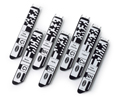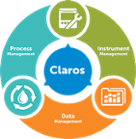-
Products
- Lab Instruments
- Lab Meters and Probes
- Chemistries, Reagents, and Standards
-
Online Analyzers
Ammonium Analysers Ammonia Monochloramine Analyzers Chlorine Analyzers
- CL17sc
- CL10sc Amperometric
- 9184 sc Amperometric
- Ultra Low Range CL17sc Colorimetric Chlorine Analyser
EZ Series Analysers- Iron
- Aluminium
- Manganese
- Phosphate
- Chloride
- Cyanide
- Fluoride
- Sulphate
- Sulphide
- Arsenic
- Chromium
- Copper
- Nickel
- Zinc
- Ammonium
- Total Nitrogen
- Total Phosphorus
- Phenol
- Volatile Fatty Acids
- Alkalinity
- ATP
- Hardness
- Toxicity
- Sample Preconditioning
- Boron
- Colour
- Nitrate
- Nitrite
- Silica
- Hydrogen Peroxide
- Sodium
- EZ Series Reagents
- Flow and Collections
-
Online Sensors and Controllers
pH & ORP Sensors
- 12mm pH/ORP
- 8362 sc High Purity
- Combination pH/ORP
- Differential pH
- Digital Differential ORP
- Digital Differential pH
- LCP ORP
- LCP pH
Conductivity Sensors- 3400 Analogue Contacting
- 3400 Digital Contacting
- 3700 Analogue Inductive
- 3700 Digital Inductive
- 9523 Cation Conductivity
- 9525 DCCP System
- Automated Lab Systems
-
Multiparameter Online Panels
Event Detection and SecurityMulti-Parameter
- Claros Water Intelligence System
- Test Kits & Strips
-
Microbiology
Prepared Media InstrumentsDehydrated Media KitsLabware
- Accessories
- Funnels, Pumps & Manifolds
- Microbiology Filters
- Petri Dishes & Accessories
- Sampling Bags
- Vials, Tubes, Bottles & Racks
-
Lab Equipment and Supply
ApparatusInstrumentsGeneral Lab Consumables Safety EquipmentBooks and Reference Material Glassware/Plasticware
- Samplers
-
Hach eLearning
Lab Product Training Process Product Training
- AN-ISE sc
- Amtax sc
- B3500
- B7000
- CL17sc
- Differential pH Sensor
- Filtrax Sample Filtration Systems
- LDO sc
- Nitratax sc
- Orbisphere 6110
- Phosphax sc
- SC1000
- SC200
- SC4500
- Solitax sc
- TU5300sc/TU5400sc
- Parameters
-
Software Solutions
-
Claros Water Intelligence System
Product Pillars Data Management
- Solutions For:
- Collection
- Visualization & Analytics
- Reporting
- Data Accuracy
Instrument Management- Solutions For:
- Maintenance
- Troubleshooting
- Remote Access
- Lab and Process Comparison
Industry ChallengesClaros News Claros Software Release Notes - Aquatic Informatics
-
Claros Water Intelligence System
- Industries
- Support
- News & Events
Hach Canada
Choose your country or region:
Europe
Americas
Asia - Australasia
- Australia
- Mainland China
- India
- Indonesia
- Japan
- Malaysia
- New Zealand
- Philippines
- Singapore
- South Korea
- Thailand (Thai)
- Taiwan
Middle East - Africa
Nitrogen, Total
What is Nitrogen?
Nitrogen is a chemical element with the symbol N, the atomic number of 7, and the atomic mass of 14. It can occur in a diatomic molecular form (N 2) as a colorless gas and be a part of a liquid or solid compound. About 78% of the Earth's atmosphere is composed of a gaseous form of nitrogen making it the most abundant uncombined element.
During the nitrogen cycle, nitrogen moves from the atmosphere, into the biosphere (in organic compounds), then back into the atmosphere. Complex organisms need nitrogen to build essential molecules like amino acids (and thus proteins), nucleic acids (DNA and RNA) and adenosine triphosphate (ATP - energy transfer molecule).
Because plants cannot use gaseous nitrogen, they rely on nitrogen fixing bacteria in the soil to convert it to ammonia and nitrite. Nitrate-forming bacteria convert nitrite into nitrate under aerobic conditions. Nitrate represents the most completely oxidized state of nitrogen.
Nitrification and Denitrification
Nitrification is the two-step biological oxidation of ammonia to nitrite and finally nitrate. Denitrification is a microbially facilitated process during which nitrate is reduced to ultimately produce molecular nitrogen.
Nitrification/denitrification is most widely used in wastewater treatment processes. In these processes, different conditions in oxic (aerobic) and anoxic zones of wastewater treatment are used by autotrophic bacteria such as nitrosomonas, or heterotrophic bacteria such as nitrobacter to convert ammonia, nitrite and nitrate to nitrogen gas.
Oxygen control is critical to nitrification among other important factors such as alkalinity. Dissolved oxygen (DO) must be monitored and managed during nitrification. Effective denitrification relies on the lack of dissolved oxygen and an appropriate amount of readily degradable carbon.
Total Kjeldahl Nitrogen
The term total Kjeldahl nitrogen refers to the combination of ammonia and organic nitrogen. However, it does not include nitrite-nitrogen or nitrate-nitrogen.
Total Nitrogen
Total nitrogen is the sum of all the different forms of nitrogen present in the water, including ammonia and organically bonded nitrogen (total Kjeldahl nitrogen), as well as nitrite and nitrate.
Ammonia & Ammonium
Ammonia and ammonium have a pH and temperature-specific relationship.
Water Treatment
Ammonia’s corrosive properties (in gaseous form and concentrated solutions) can cause mild eye or skin irritation to chemical burning depending on the concentration. Additionally, at even low levels ammonia can cause aesthetic problems like objectionable taste or odor.
Wastewater Treatment
Ammonia is toxic to aquatic life even at very low concentrations. Wastewater facilities discharge treated water into a wide variety of locations. Most treatment plants discharge into receiving waters that have specific designated uses and aquatic life. The combination of these determines the level of ammonia that can safely be discharged from a wastewater treatment plant.
Why Measure Nitrogen?
While nitrogen in the form of ammonia, nitrite and nitrate is an essential nutrient for plants and animals, excess nitrogen can be detrimental in many cases.
- In bodies of water, high concentrations of nitrogen can cause depletion of DO and thus negatively affect aquatic life.
- Drinking water containing excess nitrogen in the form of ammonia or nitrate can pose public health risks. Furthermore, changes in nitrite concentrations in drinking water distribution systems can indicate the onset of nitrification, which compromises water quality.
- In wastewater treatment, high concentrations of ammonia in conjunction with elevated pH can be toxic to sludge digestion microbes.
At Hach ®, find the testing equipment, resources, training and software you need to successfully monitor and manage nitrogen levels in your specific process application.
Featured Products to Measure Nitrogen
510 ORBISPHERE controller table version, including battery & quick connection cables
The Orbisphere ® 51x controller using Orbisphere ® thermal conductivity sensors provide precise, selective and reliable measurements of N 2.
Shop NowEZ Series Total Nitrogen Analysers
The EZ Series Online Analyzers offer multiple options to monitor total nitrogen in water.
Shop NowHach BioTector B7000 TOC/TN/TP Analyser
A single analyzer for carbon contamination and nitrogen/phosphorus nutrient levels in water.
Shop NowHach is dedicated to providing high-quality reagents for routine and challenging water analysis.
Shop Now
Which Processes Require Nitrogen Monitoring?
Surface Water, Blended Water and Ground Water
Ammonia, nitrite and nitrate may naturally occur in bodies of water or be present due to fertilizer runoff, animal waste runoff, failing septic systems, blending with chloraminated water or industrial discharges containing corrosion inhibitors. Therefore, it is important to monitor ammonia, nitrite and nitrate levels in order to guide and optimize treatment.
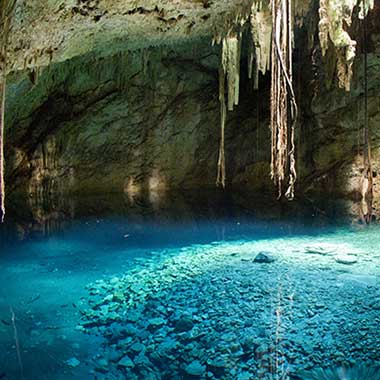
Drinking Water Treatment
When ammonia is not used during disinfection, its presence in a distribution system may indicate leaching from materials used in the pipework construction or water contamination due to damage in the system. When unwanted ammonia combines with chlorine, it diminishes the disinfection strength of chlorination.
When ammonia is used for disinfection in the chloramination process, its levels must be monitored and managed to safeguard public health.
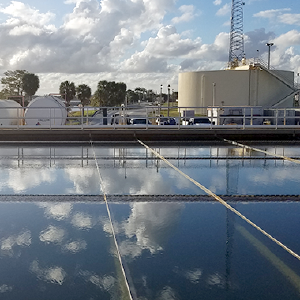
Aquaculture
As a waste product of aquatic life, ammonia can be toxic to fish and aquatic plants at levels as low as 0.5 mg/L. In established aquariums, ammonia can be rapidly converted to nitrite and eventually nitrate. Most aquariums aim to have zero ammonia present.
In natural aquatic environments, high ammonia levels can result in excess algae growth that blocks sunlight, impairing sight-feeding and photosynthesis.
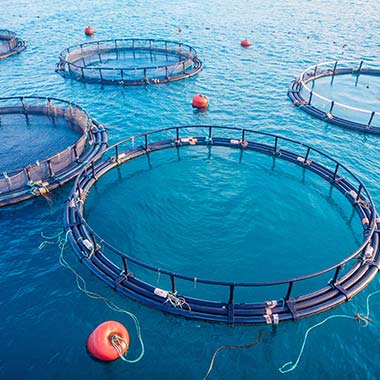
Agriculture
Nitrogen in the form of ammonia is used by plants to create essential organic molecules needed by complex organisms. To aid or enhance this natural process (which is part of the nitrogen cycle), ammonia is often added to fertilizers. For example, hydroponic nutrient solutions introduce nitrogen as an ammonia salt. Ammonia can also be present in soil due to urea dosing.

Pharmaceutical Manufacturing
In pharmaceutical production, ammonia solution is used to regenerate weak anion exchange resins and adjust pH of the process water.

Wastewater Treatment
Total nitrogen methods measure nitrogen loads on influent streams, at intermediate stages of water treatment for sludge, and on effluent to gauge overall treatment plant efficiency. Assessing nitrogen levels allows process monitoring, adjustment and nitrogen reduction efficiency throughout the treatment.
Typical ammonia levels in raw municipal wastewater range from 30 mg/L - 50 mg/L NH 3 -N. Nitrate levels indicate the stage of conversion of ammonia and organic nitrogen forms to nitrate by the aerobic biological treatment steps during nitrification.
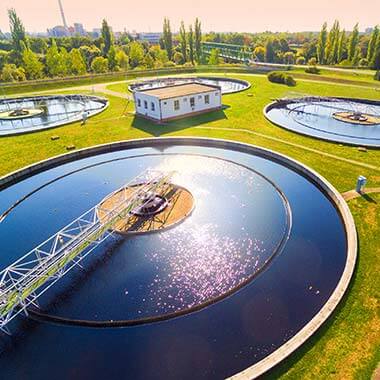
Sludge Retention Time
A correct sludge retention time (SRT) and MLSS level in the aeration basin are fundamental for compliance and energy efficient treatment to ensure stable nitrification.
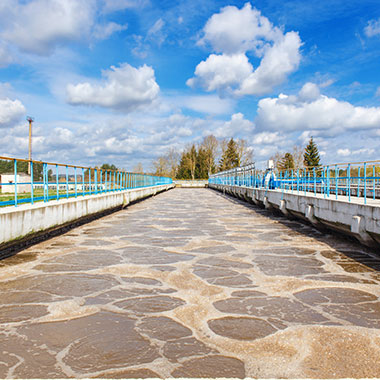
How is Total Nitrogen Monitored?
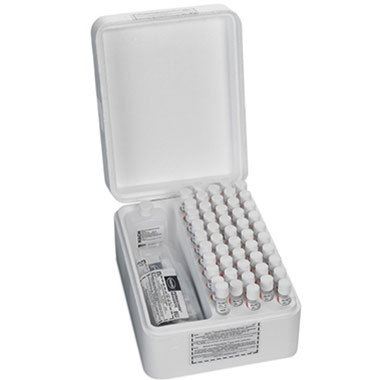
Titanium Chloride Reduction Method (Total Inorganic Nitrogen)
Titanium (III) ions reduce nitrate and nitrite to ammonia in a basic environment. After centrifugation to remove solids, the ammonia is combined with chlorine to form monochloramine. Monochloramine reacts with salicylate to form 5-aminosalicylate (a green solution), as in the salicylate method in ammonia nitrogen (see nitrogen and ammonia).
Benchtop:
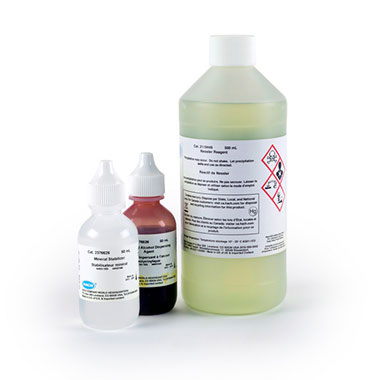
Nessler Method (Total Kjeldahl Nitrogen)
Only the organic nitrogen compounds that are present as organically bound nitrogen in the trinegative state are determined in this test. Nitrogen in this form is converted into ammonium salts by the action of sulfuric acid and hydrogen peroxide. The ammonia is then analyzed by a modified Nessler method test. The measurement wavelength is 460 nm for spectrophotometers or 420 nm for colorimeters.
Benchtop/Portable:
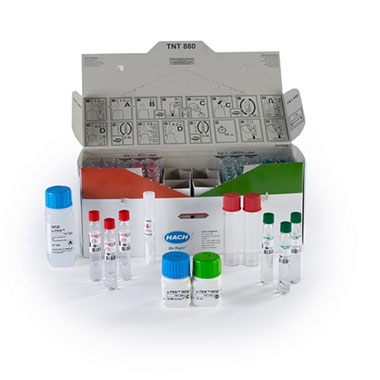
Dimethylphenol Method (Simplified Total Kjeldahl Nitrogen, s-TKN)
In the simplified TKN USEPA approved method, inorganic and organic nitrogen are oxidized to nitrate by digestion with peroxydisulfate. The nitrate ions react with 2,6-dimethylphenol in a solution of sulfuric and phosphoric acid to form a nitrophenol. Oxidized forms of nitrogen in the original sample (nitrite + nitrate, due to sample preservation) are determined in the second test vial and then subtracted, which results in TKN.
Benchtop:
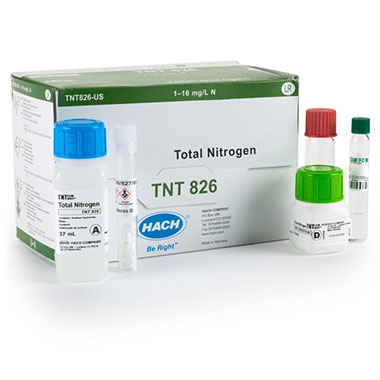
Persulfate Digestion Method (Total Nitrogen)
An alkaline persulfate digestion converts all forms of nitrogen to nitrate. Sodium metabisulfite is added after the digestion to eliminate interferences from halogen oxides. Under strongly acidic conditions, nitrate reacts with chromotropic acid to nitrate the biphenyl rings at several locations, forming several nitrated products. The nitrated products are measured at 410 nm.
Benchtop/Portable:
Inorganic and organic nitrogen compounds are digested with peroxodisulfate and oxidized to nitrate. The nitrate ions react with 2,6-dimethylphenol in a solution of sulfuric and phosphoric acid to form a nitrophenol. The measurement wavelength is 345 nm.
Benchtop:
Inorganic and organic nitrogen compounds are digested with peroxydisulfate and oxidized to nitrate. The nitrate is reduced to nitrite by adding a reducing reagent. The nitrite reacts in an acidic medium with the color reagent to produce a violet azo complex. The measurement wavelength is 546 nm.
Online:
EZ Series Total Nitrogen Analyzers
Two-stage advanced oxidation process using hydroxyl radicals. Direct photometric analysis of nitrate after oxidation.
Online:
Hach BioTector ® B7000 TOC/TN/TP Analyzer
To learn more about monitoring other forms of nitrogen, visit these related parameter pages: ammonia & ammonium, nitrate & nitrite.
Frequently Asked Questions
What TN ranges are offered on the EZ Series Analyzers?
The EZ Series online analyzers offer multiple options to monitor total nitrogen in water. Typical applications are wastewater and surface water.
- EZ7700 Nitrogen, total, 0.1 - 2 mg/L
- EZ7701 Nitrogen, total, 0.2 - 5 mg/L
- EZ7702 Nitrogen, total, 0.25 - 10 mg/L
- EZ7703 Nitrogen, total, 0.5 - 20 mg/L
EZ Series also offer combination TN/TP Analyzers:
- EZ7600 Nitrogen, total, 0.05 - 2 mg/L & Phosphorus, total, 0.01 - 1 mg/L
- EZ7601 Nitrogen, total, 0.1 - 5 mg/L & Phosphorus, total, 0.02 - 2 mg/L
- EZ7602 Nitrogen, total 0.2 - 10 mg/L & Phosphorus, total, 0.05 - 5 mg/L
- EZ7603 Nitrogen, total 0.5 - 50 mg/L & Phosphorus, total, 0.05 - 10 mg/L
EZ Series can also be configured to measure TN, NO 3 and NO 2:
EZ7750 Nitrogen, total, 0.1 - 2 mg/L & Nitrate, 5 - 600 µg/L & Nitrite, 10 - 800 µg/L
Why does TNT880 include two test vials?
In the s-TKN test using TNT880, the red-capped vial that is digested gives a total nitrogen value. The green-capped vial that is not digested gives a combined nitrate and nitrite reading. The result from subtracting the nitrate and nitrite value from the total nitrogen value is the final Kjeldahl nitrogen value.
What is the relationship between the nitrogen containing compounds?
Provided below is a summary of the relationship between different nitrogen compounds and the nitrogen method recommended for analysis:
(TIN) = (NH 3) + (NO 3 -) + (NO 2 -)
(TN) = Organic Nitrogen (all) + NH 3 + NO 3 - + NO 2 -
(TKN) = Organic Nitrogen (trinegative oxidative*) + NH 3
*Trinegative oxidative: Will not account for azide, azine, azo, hydrazone, nitrile, nitro, nitroso, oxime, and semi-carbazone
Comparing TKN results
TKN = (approx.) TN - (NO 3 - + NO 2 -)
TKN = (approx.) NH 3 + Organic Nitrogen
Organic Nitrogen:
TKN - NH 3 = Organic Nitrogen
TN-TIN = Organic Nitrogen
Acronym Legend:
Total Inorganic Nitrogen (TIN)
Ammonia (NH 3)
Ammonium (NH 4 +)
Nitrate (NO 3 -)
Nitrite (NO 2 -)
Total Kjeldahl Nitrogen (TKN)
Total Nitrogen (TN)
Does Hach have a total organic nitrogen test?
Hach does not have a method for directly measuring total organic nitrogen.
There are two ways to determining the total organic nitrogen of a sample:
- Measure the TKN (total Kjeldahl nitrogen) and subtract the ammonia results to calculate the total organic nitrogen or;
- Measure the total nitrogen and subtract the total inorganic nitrogen result to calculate the total organic nitrogen.
Are total nitrogen methods EPA approved?
Yes, there are approved methods for reporting purposes. For example, s-TKN (TNT880) contains the total nitrogen component and is EPA approved for regulatory reporting.





